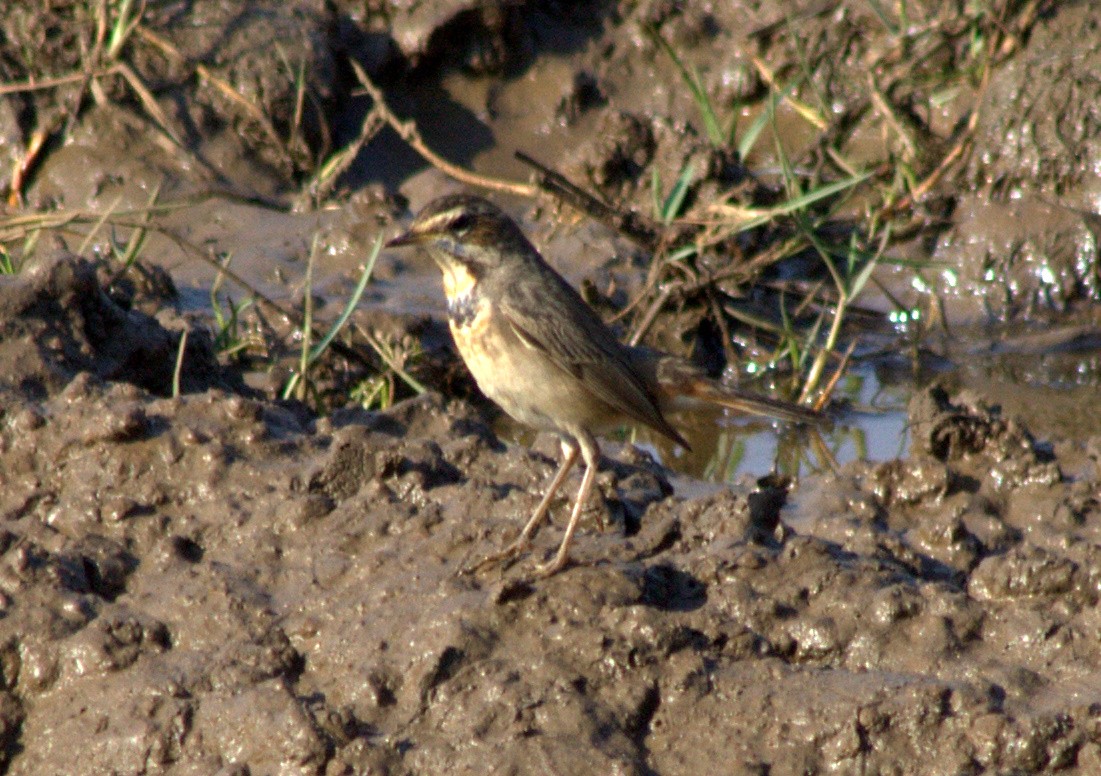Bluethroat
A species of Nightingales and Allies Scientific name : Luscinia svecica Genus : Nightingales and Allies
Bluethroat, A species of Nightingales and Allies
Botanical name: Luscinia svecica
Genus: Nightingales and Allies
Content
Description People often ask General Info
 Photo By Dr. Raju Kasambe , used under CC-BY-SA-3.0 /Cropped and compressed from original
Photo By Dr. Raju Kasambe , used under CC-BY-SA-3.0 /Cropped and compressed from original Description
The bluethroat (Luscinia svecica) is a small passerine bird that was formerly classed as a member of the thrush family Turdidae, but is now more generally considered to be an Old World flycatcher, Muscicapidae. It, and similar small European species, are often called chats. It is a migratory insectivorous species breeding in wet birch wood or bushy swamp in Europe and across the Palearctic with a foothold in western Alaska. It nests in tussocks or low in dense bushes. It winters in north Africa and the Indian subcontinent. The bluethroat is similar in size to the European robin at 13–14 cm. It is plain brown above except for the distinctive black tail with red side patches. It has a strong white supercilium. The male has an iridescent blue bib edged below with successive black, white and rust coloured borders. Some subspecies, such as L. svecica svecica (red-spotted bluethroat) of northern Eurasia, have a red spot in the centre of the blue bib. Others, such as L. svecica cyanecula (white-spotted bluethroat) of southern and central Europe, have a white spot in the centre of the blue bib. L. svecica magna in Turkey has no central spot. Females of all subspecies usually have just a blackish crescent on an otherwise cream throat and breast. Newly fledged juveniles are freckled and spotted dark brown above. Despite the distinctive appearance of the males, recent genetic studies show only limited variation between the forms, and confirm that this is a single species. Moults begins in July after breeding and is completed in 40–45 days, before the birds migrate. The male has a varied and very imitative song. Its call is a typical chat chack noise. 
Size
15 cm
Colors
Brown
Gray
White
Blue
Orange
Life Expectancy
8 years
Nest Placement
Ground
Clutch Size
5 - 7 eggs
Feeding Habits
Bluethroat primarily consumes insects, supplementing its diet with seeds and berries, particularly during fall and winter.
Habitat
Bluethroat's preferred habitats include lush birch forests, willow terrains near water bodies like lakeshore and stream banks, and low scrub thickets in tundra regions. They are primarily found at lower elevations in temperate climates, and in winter, they frequent areas with dense vegetation close to water for shelter and food.
Nest Behavior
Building occurs in spring; bluethroat lays eggs in a clutch, with both parents involved in nurturing and protecting the young.
Nest Characteristics
Bluethroat's nest is a ground-based cup made from sedges, grasses, rootlets, and twigs, with a hair lining. Found in thickets or grass clumps.
Dite type
Insectivorous
People often ask
General Info
Feeding Habits
Bird food type
Bird Feeder Type

Platform
Sounds
Song
Recording location: Belgium
Song
Recording location: Belgium
Song
Recording location: Belgium
Behavior
The bluethroat is known for its energetic foraging, diligently searching for insects amongst low vegetation and on the ground. It actively flips over leaves and digs through soil to uncover its prey. With deftness, it also skillfully captures insects in flight, showcasing its versatile hunting techniques. Its interaction with its habitat is a testament to the bird's adaptability and keen survival instincts, making it a distinct and fascinating species.
Scientific Classification
Phylum
Chordates Class
Birds Order
Perching birds Family
Old world flycatchers Genus
Nightingales and Allies Species
Bluethroat